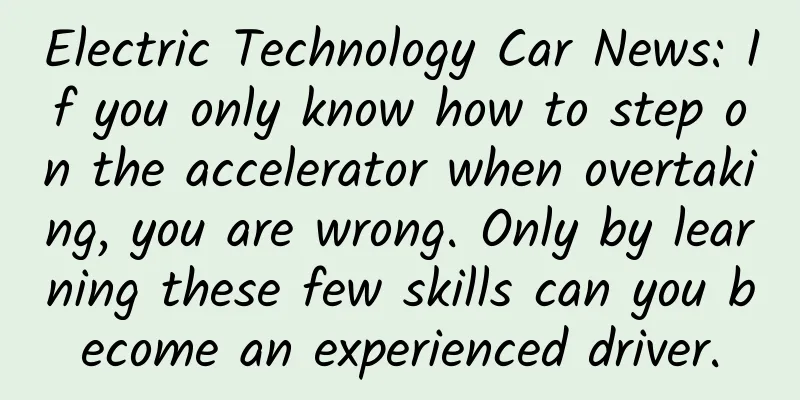Electric Technology Car News: If you only know how to step on the accelerator when overtaking, you are wrong. Only by learning these few skills can you become an experienced driver.

As a winner of Toutiao's Qingyun Plan and Baijiahao's Bai+ Plan, the 2019 Baidu Digital Author of the Year, the Baijiahao's Most Popular Author in the Technology Field, the 2019 Sogou Technology and Culture Author, and the 2021 Baijiahao Quarterly Influential Creator, he has won many awards, including the 2013 Sohu Best Industry Media Person, the 2015 China New Media Entrepreneurship Competition Beijing Third Place, the 2015 Guangmang Experience Award, the 2015 China New Media Entrepreneurship Competition Finals Third Place, and the 2018 Baidu Dynamic Annual Powerful Celebrity. |
<<: WeChat Mini Program users reinstalled the deleted app one week after its release
Recommend
Sohu Video pioneers forensic industry dramas. Why is "Forensic Qin Ming" worth looking forward to?
I believe that the audience's understanding o...
Is it an unnecessary "duplicate examination" to have an electrocardiogram and an echocardiogram?
People who are most concerned about annual physic...
How is the “Cross Tide” formed?
On July 30, a video of two tidal waves in the Qia...
400 phone can select the number first and then activate it
When we choose a number, we always hope to have b...
Google self-driving car theft case progresses: Uber engineer may face criminal charges
Anthony Levandowski, the man at the center of Alp...
How to measure the height of a tiger? First make a curry-flavored ruler | Natural Trumpet
Welcome to the 42nd issue of the Nature Trumpet c...
iOS Development Tutorial: Gesture Recognition Method
I feel it is necessary to make a brief summary of...
Do self-produced dramas have to rely on fresh actors to be interesting? Sohu Video tells you the answer
Appearance is king, and handsome actors dominate ...
30 high-quality information flow advertising cases, data from 14 industries including education, finance, e-commerce, etc.
Friends often ask what constitutes a high-quality...
Product activity operation and promotion planning plan!
Activities are a very important way to quickly at...
Stop eating it while it's hot! It may harm you...
A study led by the International Agency for Resea...
Three-cylinder engines are no longer what they used to be and are gradually becoming the mainstream trend
The list of the 2018 International Best Engines h...
How big is Battlefield 1: What basic website building knowledge do you need to know for website optimization?
As we all know, the carrier of our website optimi...
This "mechanical claw" can easily grab eggs, cut paper, and clamp chips, just like a human hand!
If a robotic hand could perform the same function...









